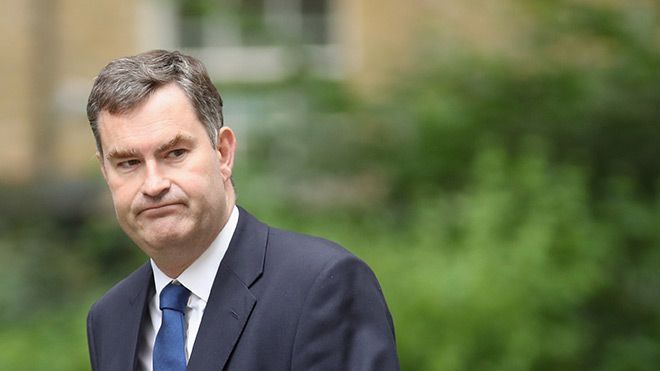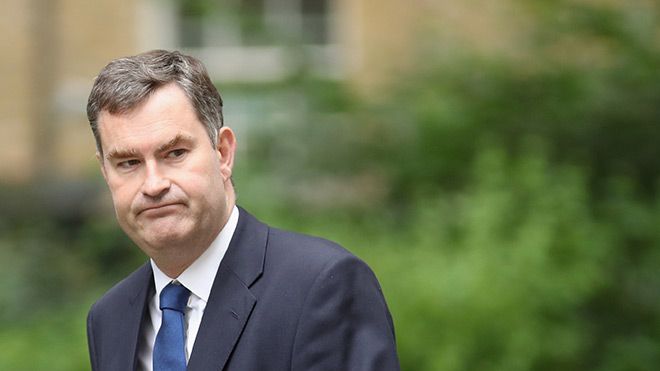
David Gauke’s response to our NHS funding campaign just isn’t adding up – #FullyFundourNHS

We have a number of concerns over the response we received from David Gauke MP, the Chief Secretary to the Treasury.
There are three key points that we disagree with the Minister’s response.
The Minister tells us:
But, in reality:
When the government responds it is “fully committed to supporting the NHS”, funding going into the NHS might suggest otherwise. The Chancellor has for too long been perpetuating the myth of a £10bn boost into the NHS by 2020/21.
The government claimed in the 2015 Spending Review, that it was delivering the “biggest ever commitment to the NHS since its creation”. That’s been far from reality. In fact, several experts have asserted that the ‘£10bn’ figure is wrong and misleading. The truth is total health spending will only rise by £4.5bn in real terms in this period.
Even with the alleged ‘additional’ £10bn plug to ‘close’ the gap by 2020, NHS funding will fall short of what is required.
The Health Foundation demonstrates that the £4.5bn increase means that real terms annual increases will only average 0.9% from 2009/10 to 2020/21. That compares with a historical average increase for the NHS of 3.8 per cent – rendering it the “lowest ever rate of funding growth over a 10-year period.”And it barely comes close to keeping up with healthcare costs of 4%. With a lack of political will to adequately invest funds, it’s no wonder the NHS is facing the “most austere decade in its history”.
The health service is being asked to make £22bn of efficiency savings, earmarked in the NHS Five Year Forward View. A report by the HSJ found no evidence to back up claims that integration between health and social care would warrant ‘cashable financial savings… in health economies’. Rather, it claimed the predictions of £22bn as “a heroic assumption.’ The government just isn’t being transparent on NHS funding.
The Minister tells us:
In reality:
The motivation behind the STP’s – to bring NHS and local government together collaboratively to enable better integrated services – are a welcome initiative. There is much need for, as the STP’s are designed to achieve: a focus on integration, prevention and better primary, community and social care. They are particularly worthwhile given the upheavals we’ve witness result from the fragmentation and disconnect in the NHS since the 2012 reforms.
That being said, in order to truly meet their objective, they should not come at the expense of better patient care and outcomes. Much of the positive intentions underpinning the STP’s are being overshadowed by the huge savings drive. In some places this has led to cuts and reconfigurations pushed by financial over clinical imperatives. Such cases have already become live issues in some parts of the country, with the loss of beds and hospital closures planned in Devon and other downgrading and closures planned in Dorset as just two examples. Frustrations are being stoked further in areas where consultations with the workforce or local communities are absent from the process.
HSJ journalist, David West, offers some light on the STP’s:
The Minister tells us:
In reality:
The government recently announced that local authorities will be given the power to levy social care by raising council tax by a 3 per cent precept in each of the next two years. Sajid Javid, the Communities Secretary, stated the rise from 2 to 3 per cent could bump up to £208m in 2017-18 and £444m in 2018-2019. Additionally, Sajid Javid announced social care will receive £240m being diverted from the new homes bonus scheme. The Kings’ Fund analysis shows these plans to be ‘deeply flawed’ to secure sustainable funding. The precept was used by 95 per cent of councils, but generated only £382m, 3 per cent lower than what councils intend to spend on adult social care. The income would even fail to cover the £612m estimated cost of the National Living Wage in 2016. Despite public will to pay more for good care, increasing the precept from 2 to 3 per cent would ‘barely make a dent’ in the funding crisis. Experts, such as the LGA and Nuffield Trust have already indicated that the precept will raise less in areas of greatest need. Increasing taxes for low-income families will also be a tough decision for councils. Considerable burden will be transferred onto poorer families in poorer areas, where Councils will struggle to raise enough revenue where it is needed most, creating a postcode lottery.
The losers will of course be patients, specifically older people, their families and carers. Significant pressures will also be exerted on services without the right investment. That could be problematic given the IPPR’s recent research shows that by 2030 the population of over 65’s will increase by 33 per cent, compared to the 16-64 population only growing by 3%. Put differently, despite an ageing population, investment in social care is set to fall to less than 1% of GDP by the end of this parliament. The shortages of beds in residential care homes, due to budget reductions, could be associated with declining numbers of over 65’s accessing publicly funded social care, now down by 26 per cent. That’s led to 400,000 fewer older people getting paid-for care that they need. This absolutely uproots the basis on which the NHS was founded: a free service at the point of need.
It’s fair to say then that the government’s figures just aren’t adding up! The NHS needs to be fully funded if we are to avoid a ‘humanitarian crisis’ again.
Stay Updated
Want to hear about our latest news and blogs?
Sign up now to get it straight to your inbox
